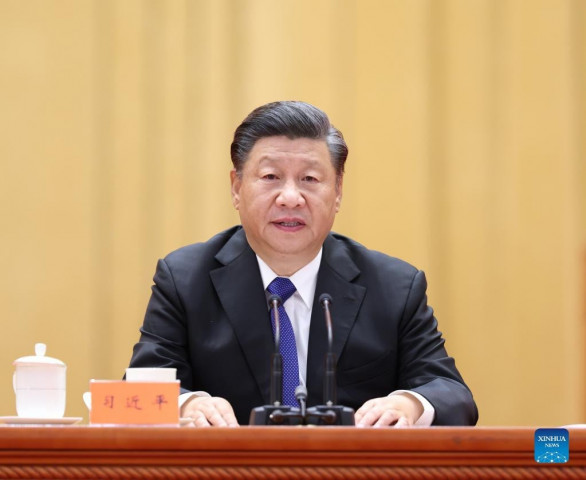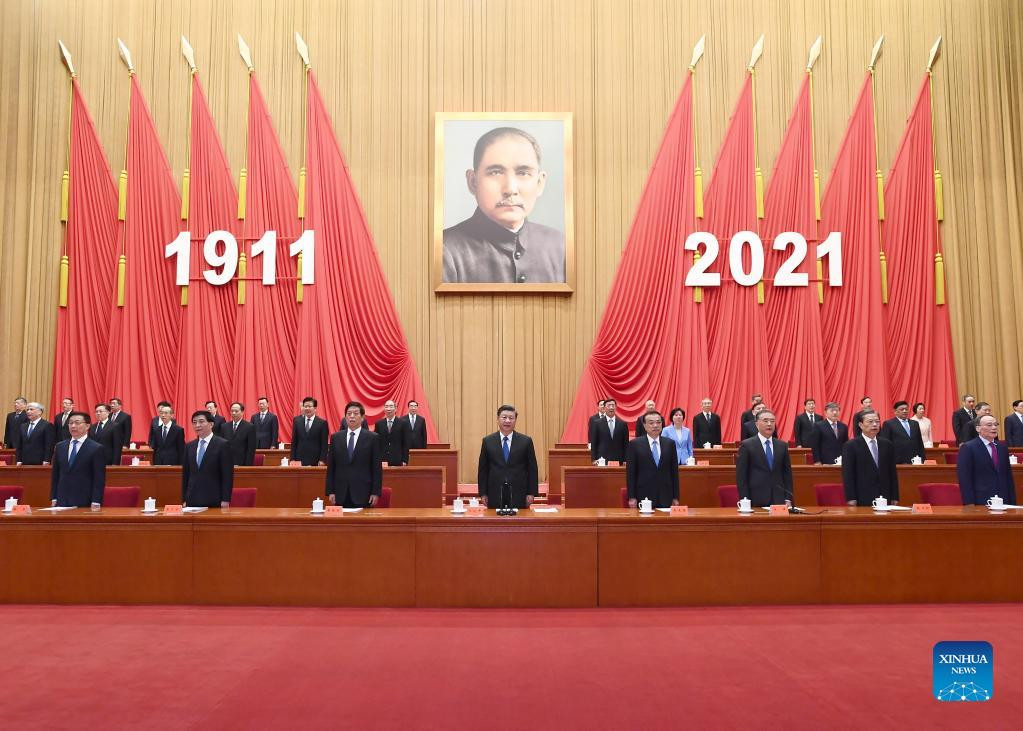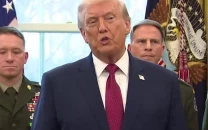WATCH: China's Xi vows 'peaceful reunification' with Taiwan
Historical task of reunification of motherland must be fulfilled, and will definitely be fulfilled, says president

Chinese President Xi Jinping vowed on Saturday to achieve "peaceful reunification" with Taiwan after a week of tensions with the Chinese-claimed island that sparked international concern.
Taiwan responded shortly after by calling on Beijing to abandon its coercion, reiterating that only Taiwan's people could decide their future.
Democratically ruled Taiwan has come under increased military and political pressure from Beijing to accept its sovereignty, but Taipei has pledged to defend its freedom.
Speaking at Beijing's Great Hall of the People, Xi said the Chinese people have a "glorious tradition" of opposing separatism.
"Taiwan independence separatism is the biggest obstacle to achieving the reunification of the motherland, and the most serious hidden danger to national rejuvenation," he said on the anniversary of the revolution that overthrew the last imperial dynasty in 1911.

Peaceful "reunification" best meets the overall interests of the Taiwanese people, but China will protect its sovereignty and unity, he added.
"No one should underestimate the Chinese people's staunch determination, firm will, and strong ability to defend national sovereignty and territorial integrity," Xi said. "The historical task of the complete reunification of the motherland must be fulfilled, and will definitely be fulfilled."
'Provocative steps'
Still, the speech was poorly received in Taiwan.
Read more: Don't play with fire on Taiwan, China warns US
The presidential office said they were a sovereign independent country, not part of the People's Republic of China, and had clearly rejected China's offer of "one country, two systems" to rule the island.
"The nation's future rests in the hands of Taiwan's people," the office said.
In a separate statement, Taiwan's China-policy making Mainland Affairs Council called on Beijing to "abandon its provocative steps of intrusion, harassment and destruction" and return to talks.
China's air force mounted four straight days of incursions into Taiwan's air defence identification zone from Oct. 1, involving close to 150 aircraft, though those missions have since ended.
‘The complete reunification of our country must be and can be realized’: China's President Xi Jinping vows 'reunification' with Taiwan. His remarks follow a week of heightened tensions with the Chinese-claimed island https://t.co/MEjUsBBmu3 pic.twitter.com/31nupEuy52
— Reuters (@Reuters) October 9, 2021
Taiwan officially calls itself the Republic of China, the name of the country established in 1912 after the fall of the Qing dynasty.
That government fled to Taiwan in 1949 after losing a civil war with the Communists, who set up today's People's Republic.
Taiwan marks Oct. 10, the date when the anti-imperial revolution began in China, as its national day, and President Tsai Ing-wen will give a keynote address in Taipei on Sunday.
Also read: US forces secretly training Taiwanese troops since last year: report
Tsai, speaking at a pre-national day reception at an air base in northern Taiwan's Hsinchu on Saturday night, thanked the armed forces for protecting Taiwan, though did not mention the tensions with China.
"We will continue to work hard to hold fast the front lines of democracy and freedom," she said.
China commemorates the revolution by harking back to republican leader Sun Yat-sen's calls for patriotism, national rejuvenation and good governance.
Xi used the speech to underscore the need for "a strong force to lead the country, and this strong force is the Chinese Communist Party".
"Without the Chinese Communist Party, there would not be a New China, and therefore no rejuvenation of the Chinese people," he said.



















COMMENTS
Comments are moderated and generally will be posted if they are on-topic and not abusive.
For more information, please see our Comments FAQ